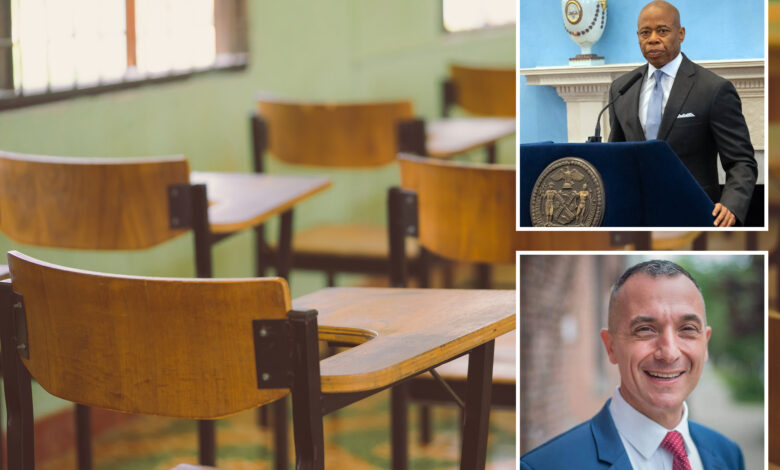Program for at-risk NYC students imperiled by loss of federal stimulus funds as city spends on migrants

A program that serves thousands of students at risk of dropping out of school could be on the chopping block as federal emergency COVID funding expires at the end of June, sources said.
The Learning to Work program receives about three-quarters of its budget — $32 million out of $40 million — from federal pandemic stimulus funding.
As New York City grapples with the costly migrant crisis, Mayor Eric Adams and the City Council have to fill the massive hole in the upcoming budget when the federal dollars disappear on June 30.
The Learning to Work program serves 16,000 students enrolled in 66 second-chance or transfer schools, 19 Young Adult Borough Centers served by 20 community-based, not-for-profit groups. Many students are behind in academic credits or have criminal records and are trying to get on track toward graduation or learn skills to get a job.
The teens with the greatest needs are being left out in the cold, said Michael De Vito, executive director of the New York Center for Interpersonal Development. The program runs three Young Adult Centers at Tottenville, McKee and Concord high schools on Staten Island. Internship programs are offered at all three sites.
“This program needs immediate attention. But we haven’t heard anything from the Department of Education about our funding other than, ‘We don’t know,’” De Vito said.
De Vito said the financial crunch due to the migrant crisis hasn’t helped matters.
“We’re being told the city has to focus on other priorities, that the city needs additional resources for the migrants,” he said. “It’s becoming political. We don’t want to be political. We want our young people taken care of.”
The New York City Public Schools have received more than $7 billion in federal stimulus funding, starting under former Mayor Bill de Blasio, including for the Learning to Work program.
“At the time using federal dollars to fund the program made sense because we lost so much in tax revenues during the pandemic. That saved us,” De Vito said.
But he expressed surprise at the lack of planning and direction from City Hall and the Council about an action plan to address the loss of federal pandemic dollars.
“It should not have taken this long to figure it out,” De Vito said.
Another source familiar with budget discussions said the city has no plan — at least not yet — on how to finance the program.
In a letter De Vito sent to state Sen. Jessica Scarcella-Spanton Feb. 9, he called the initiative a “life-saving program.”
He said at-risk students benefit from small learning environments, intensive attendance outreach, youth and family counseling, work-based learning, post-graduate planning and job training and internships. Some of the students, he noted, are homeless.
“We keep our kids out of jail, supporting them as they surf couches, sit with them in emergency rooms, making sure they have food to eat and clothes on their backs,” he said.
He cited data claiming that students participating in internships in LTW Programs are 9 times more likely to graduate than those in the same circumstances, and they have a far better chance of earning a diploma in YABC/Transfer schools than a traditional public school.
A city Department of Education rep said Sunday the funding for the program is still up in the air.
“Creating and deepening career pathway opportunities for young people is of the utmost importance for New York City Public Schools. While no final decisions have been made, we are engaging with Learning to Work providers as we plan for next year and beyond and recognize the importance of this impactful programming for our city’s young people,” said DOE spokesperson Chyann Tull.
“As with all programs funded by expiring federal stimulus dollars, we continue to advocate to our state and local partners to identify new funding to sustain these programs after this year.”




